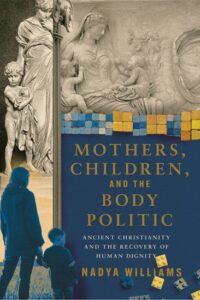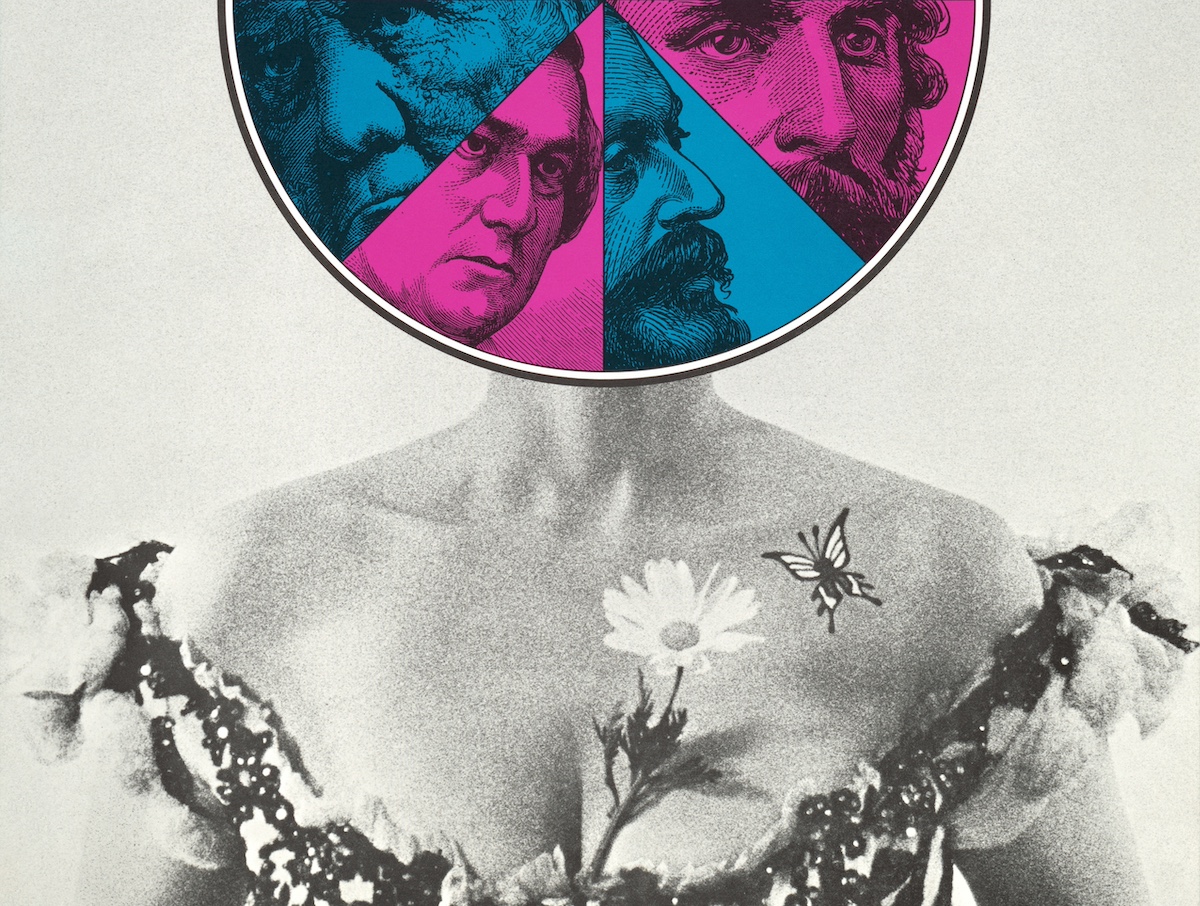Tickle v. Giggle is an Australian court case that, in its very name, evokes the absurd. Since it has scratched a legal itch and produced much gallows humour, there is something of a cosmic joke about the nomenclature of the case, which is the latest battle in the existential war over the category of “woman.”
So, what is it all about? Who are the central protagonists, and what are the implications?
Roxanne Tickle, a trans-identifying male, is the plaintiff who has brought the first case of “gender identity discrimination” in the Federal Court of Australia against the (now-defunct) woman-only app “Giggle for Girls.” Tickle, who was barred from the app in September 2021, claims that the exclusion of males who identify as transgender women is illegal discrimination. Thus, most of the proceedings have concentrated on what constitutes the legal definition of woman. The main question is whether Tickle can identify into the category of woman, and therefore whether sex is mutable in the eyes of the law.
As expected, the Federal Court ruled in favour of Tickle. In doing so, the court came down categorically on the side of gender identity, discriminating against women in the process and, paradoxically, using their own laws to do so.
Far from being a feminist victory, this ruling—and the ideology it represents—is a subversion of the work of foundational thinkers like Simone de Beauvoir. These women critiqued cultural conceptions of gender norms in order to free women from arbitrary constraints—not to deny biology or take away their access to private female-only spaces.
A Landmark Case
The Giggle for Girls app was created as a single-sex online space. All single-sex spaces are by definition discriminatory, albeit in a manner accepted within the law. Such legitimate discrimination on the basis of sex necessarily excludes males, no matter how they view themselves. However, if the law protects “gender identity,” it prevents the exclusion of males who identify as transgender women.
This landmark case was the inevitable result of legal changes instituted in 2013, when the Sex Discrimination Act of 1984 was amended to include protections on the basis of sexual orientation, gender identity, and intersex status. This created an implicit ontological conflict between competing claims to the category of woman. Is a woman defined by biological sex or by gender identity? These are overlapping but not identical categories.
Both cannot be protected at once. One definition refers to natal females—those whose bodies are ordered toward the production of large gametes (eggs) and the gestation of children—and sets a definitional and legal limit around biological sex. The other newer definition includes those who identify as women, even if they lack XX chromosomes, non-surgically constructed female genitalia, and naturally produced female hormones. But the human species is sexually dimorphic, and the sex of these individuals is male.
Eleven years later, this legal conflict has now been “resolved” in the Federal Court of Australia.
“Sex is Changeable”
While the court found Roxanne Tickle did not face “direct” unlawful treatment on the basis of gender identity, the exclusion of males—including Tickle—resulted in “indirect discrimination.”
Justice Bromwich ordered the defendants to pay Tickle A$10,000 compensation. This is significantly less than the $200,000 Tickle was claiming. The court also ordered the respondents pay Tickle’s legal costs, capped at $50,000. Tickle had also sought an apology, but the judge declined to order that, stating that it would be “futile and inappropriate to require an inevitably insincere apology to be made.”
However, the real bombshell, the one that ends Australian women’s claim to their own sex category (and so much else besides) is this: Justice Bromwich concluded that, “in its contemporary ordinary meaning, sex is changeable.” Moreover,
The acceptance that Ms Tickle is correctly described as a woman, reinforcing her gender-identity status for the purposes of this proceeding, and therefore for the purposes of bringing her present claim of gender identity discrimination, is legally unimpeachable.
As I (and others) have observed before, this debate is not a mere political disagreement. Rather, it is a disagreement about the nature of reality itself. By replacing sex with gender and accepting that men can “opt in” to the female category, we reject the materiality of the body and accept a disembodied, non-falsifiable internal feeling as the basis of identity—and of human nature itself. If sex can change, where has the “sex” in sex change gone? It has been culturally eviscerated, elasticised beyond all recognition, and “disappeared” into a superordinate category of gender.
To protect self-proclaimed gender identity as the determining attribute of female status not only means that “transgender women” now legally have the right to call themselves women. It also means that natal women have lost the right to call those same individuals “men.” As has become obvious in country after country, this prevents legitimate exclusions hitherto built into the law to protect women’s sex-based rights and single-sex spaces (sports, awards, toilets, change rooms, prisons, apps).
Gender identity trumps sex: so says the second highest court in our land. This outcome has significant implications for Australian society and will serve as a precedent across the West.
Is One Born or Made a Woman?
When Simone de Beauvoir wrote her most famous passage in The Second Sex (1949), “One is not born, but rather becomes a woman,” she grabbed the thin edge of a wedge that women’s advocates had been using to leverage their way out of misogynist caricatures since the early fifteenth century.
De Beauvoir’s claim was quite simply—yet radically—that women’s “failure” to achieve in the public sphere—the world of politics, law, economics, society, and culture—was because there were “sexist” beliefs, laws, and customs. (How quaint the term “sexist” now seems.) Women were defined as lacking intellectual capacity: parochial, small-minded, emotional, at the behest of their sexuality and passions, stupid, immature, partial, biased, incapable of science or philosophy or art, and naturally subordinate. Woman was existentially confined to the status of “the Other,” de Beauvoir conjectured, never “the Subject” of her own destiny, let alone of History.
In throwing off the yoke of these constraining cultural beliefs and redefining them not as statements of fact but of prejudice, de Beauvoir forged what has now become the well-worn distinction between sex and gender. The former was defined as the biological substrate—the materiality and embodiment of the “adult human female”—and the latter as a societal belief system that was historically specific, contingent, and mutable. Into the latter could be breathed new life in the form of a vision of Woman as Subject. Contra Freud, for de Beauvoir, biology was not destiny, but it was extremely significant. “The body being the instrument of our grasp upon the world, the world is bound to seem a very different thing when apprehended in one manner [male] or another [female],” she observed.
It is important not to forget or misrepresent this history as some are now doing (see also here) when they blame feminists for prying apart sex and gender, as if this inevitably produced the transgender cultural colossus. Critics suggest that in separating sex and gender, intellectually and politically, feminists were “denying biological sex” and in some way aiding and abetting the erasure of sex that is now being carried out by gender ideologues. But most feminists, until the third or even fourth wave, defined sex as intrinsic to women’s being, and thus to women’s rights—for example, to equal pay or maternity leave.
Gender, within feminist theory, is simply not the same as “gender identity” as it is used today by trans rights activists. The heuristic distinction between sex and gender, carved by feminist thinkers like de Beauvoir, was never absolute. Using it to justify identitarian claims of gender inversion is to rip it out of its original context and dump it somewhere that would have been anathema to its progenitors.
Second-wave feminists relativised gender to demonstrate prejudice. Identitarians relativise sex so as to define it as changeable. As a result, reductive gender stereotypes are paradoxically reified and essentialised, even as womanhood is obliterated in law and policy. Sex is, in this new view, an essentialist ruse always already presaged by the “text” of gender. Or, as Judith Butler more economically puts it, “Sex is no longer a bodily given.” In this conception, gender identity is a free-floating signifier that relativises matter out of existence, or at least out of relevance. In short, “gender identity” advocates pillage and subvert feminist history, declaring that gender trumps and subsumes sex.
In the current narrative battle, one cannot be both born and made a woman. So which one is it? Australia has decided that one is made a woman, not by biology or culture or conditioning as de Beauvoir had it, but by self-identification and legal sanction.
We can only hope that the case will be appealed, and that the justices of the High Court will reject the just-so story of the gender ideologues and restore the rights of women.



